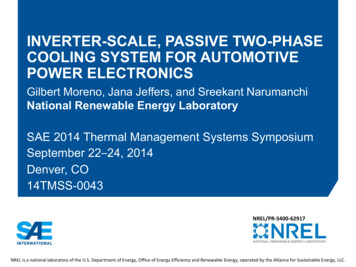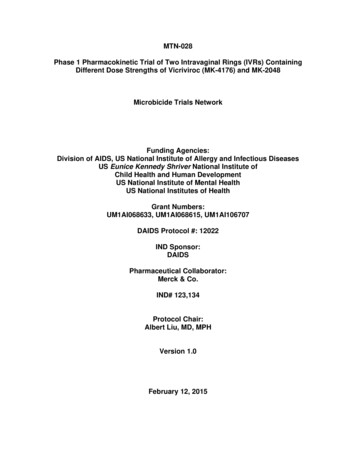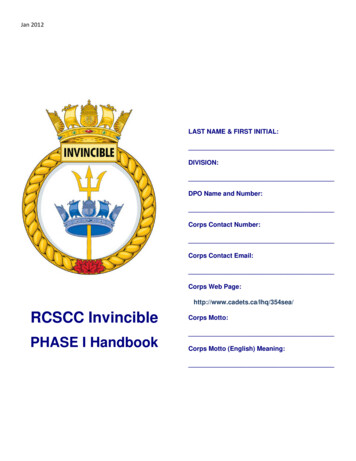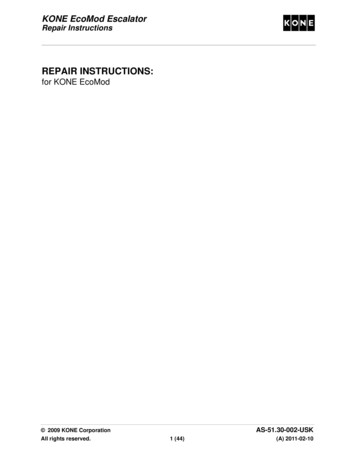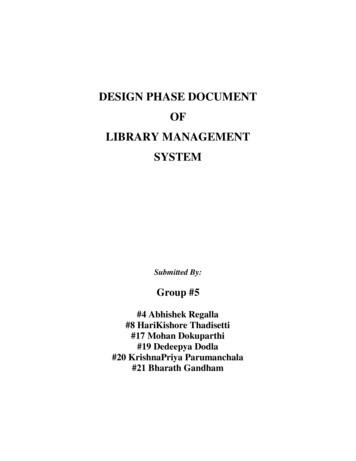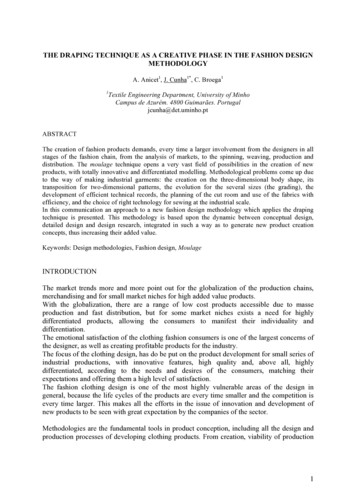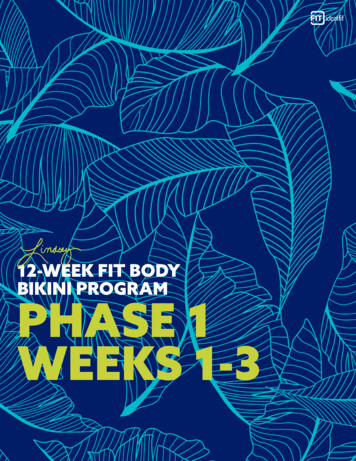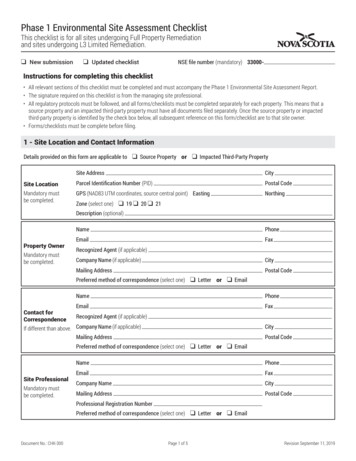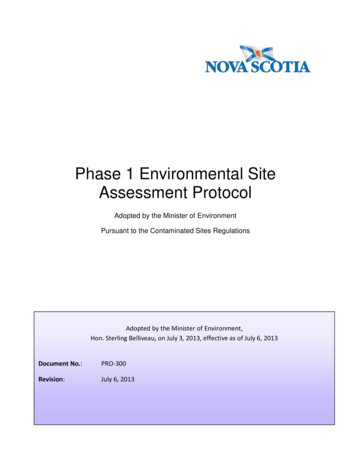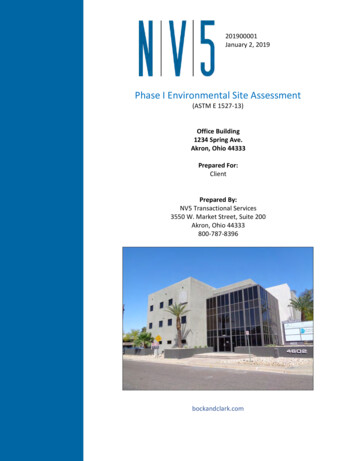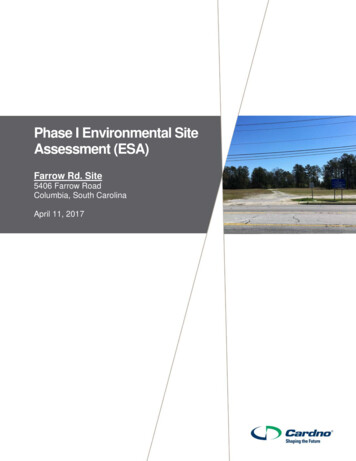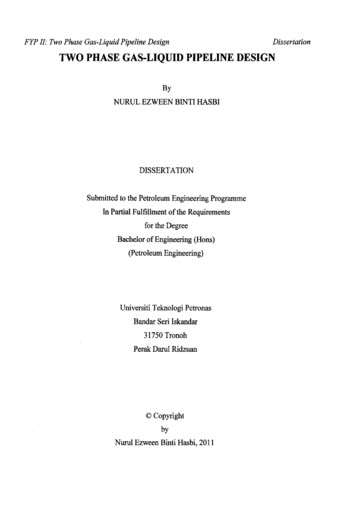
Transcription
FYP II: Two Phase Gas-Liquid Pipeline DesignDissertationTWO PHASE GAS-LIQUID PIPELINE DESIGNByNURUL EZWEEN BINTI HASBIDISSERTATIONSubmitted to the Petroleum Engineering ProgrammeIn Partial Fulfillment of the Requirementsfor the DegreeBachelor of Engineering (Hons)(Petroleum Engineering)Universiti Teknologi PetronasBandar Seri Iskandar31750 TronohPerak Darul Ridzuan CopyrightbyNurul Ezween Binti Hasbi, 2011
FYP II: Two Phase Gas-Liquid Pipeline DesignTWO PHASE GAS-LIQUID PIPELINE DESIGNByNURUL EZWEEN BINTI HASBIPETROLEUM ENGINEERINGUNIVERSITI TEKNOLOGI PETRONASMAY2011Dissertation
FYP II: Two Phase Gas-Liquid Pipeline DesignDissertationTWO PHASE GAS-LIQUID PIPELINE DESIGNbyNURUL EZWEEN BINTI HASBIA project dissertation is submitted to thePetroleum Engineering ProgrammeUNIVERSITI TEKNOLOGI PETRONASin partial fulfillment of the requirementsfor the degreeBachelor of Engineering (Hons)(Petroleum Engineering). ./A P. Aung KyawProject Supervisor N:;. te- Dia 1.au - RoiiAi - tlkandi!,Si!IOT.,.a Ollli R*UIR II JillUNIVERSITI TEKNOLOGI PETRONASTRONOH, PERAKMay2011
FYP II: Two Phase Gas-Liquid Pipeline DesignDissertationCERTIFICATION OF ORIGINALITYThis is to certify that I am responsible for the work submitted in this project, that theoriginal work is my own except as specified in the references andacknowledgements, and the original work contained herein have not been undertakenor done by unspecified sources or persons./?".NURUL EZWEEN BINTI HASBII
FYP II: Two Phase Gas-Liquid Pipeline DesignDissertationACKNOWLEDGEMENTFirst and foremost, I would like to give thanks to the Almighty who made allthings possible. I also owe my deepest gratitude to my helpful supervisor namelyAssociate Professor Aung Kyaw who have greatly helped me in giving opinions,suggestions and advices as well as his continuous encouragement during theprogression of this project. I am heartily thankful to him whose encouragement,guidance and support from the initial to the final level enabled me to develop anunderstanding of the subject.He inspired me greatly to work in this project as well ashis determination to motivate me contributed tremendously to my project. Thesupervision and support that he gave truly help the progression and smoothness ofthe project. Associate Professor Aung Kyaw has not only been one of the bestlecturers I have ever encountered, he has consistently proven himself to becommitted to the academic success of his students and has raised the caliber of myresearch. I am grateful to Associate Professor Aung Kyaw for his ability to conveycomplex concepts and always be cheerful, helpful, encouraging, and supportive, bothpersonally and professionally.I am indebted to my many of my colleagues to support me upon thecompletion of this project. Foremost, I recognize the intellectual and moral supportof my colleague. Oliver Marcus Lim, who is my coursemate have been a vey goodcompany throughout my journey doing this project. His help of finding the PIPESIMsoftware was really helpful, especially when I was facing the difficulties in learningand understanding the software. I am honored to call Oliver a mentor and friend. Heprovided a critical eye of scientific integrity and rigor to my research.I would like to thank to the course coordinators for giving me suchopportunity to explore creativity and innovativeness through this course in UTP.Lastly, I offer my regards and blessings to all of those who supported me in anyrespect during the completion of the project.2
FYP II: Two Phase Gas-Liquid Pipeline DesignDissertationABSTRACTPipelines are the most common way of transporting oil or gas in oil and gas industry.A pipeline is all parts of the physical facility through which liquids or gases such ascrude oil and natural gas are moved, usually over long distances between a producingregion and a local distribution system. A pipeline is like any other flowline. Themain differences are that pipelines are long and continuously welded, they have aminimum number of curves, they have no sharp bends, and they are most often eitherburied or otherwise inaccessible due to their location over the majority of theirlength. These differences mean that small sections of pipeline are not easily removedfor maintenance and consequently great care is taken to prevent problems arising inthe first place. A pipeline is extremely expensive to lay, and in the case of offshorepipelines, costs in the order of several million pounds per subsea mile have beenencountered. Maintenance on pipelines is also expensive but this expenditure isnecessary since, regardless of the expense, pipelines frequently form the mostefficient and cost-effective method of transporting the quantifies of oil or gasproduced. Multi-phase transportation is currently receiving much attention troughoutthe oil and gas industry. The combined transport of hydrocarbon liquids and gasescan offer significant economic savings over conventional, local, platform basedseparation facilities. Much of fluid data used to design two-phase pipeline have beendetermined experimentally and through test made in operationg two-phase pipelines.Two-phase pipeline design is a subject on which research and testing continue, andsophisticated computer programs can predict flow conditions and pressure drop moreaccurately. A number of different correlations have been developed for two-phasepipeline design. Pipe tlow simulation is used to optimize and verify design and tothrow light on various operational issues and also for training engineers andoperators. This paper is an approach to minimize the operation and maintenance costby selecting the optimum pipeline size and sizing a slug catcher between the outlet ofthe pipeline and the processing equipment. PIPESIM is used to run the simulationand compute the complex calculation involved in designing the pipeline size andsizing the slug catcher.3
FYP II: Two Phase Gas-Liquid Pipeline DesignDissertationTABLE OF CONTENTSCERTIFICATION OF ORIGINALITY . 1ACKNOWLEDGEMENT . 2ABSTRACT . 3TABLE OF CONTENTS . 4LIST OF FIGURE . 6LIST OFTABLE . 6CHAPTER 1: INTRODUCTION . 8!.PROJECTBACKGROUND . 82.PROBLEM STATEMENT. 93.SIGNIFICANT OF PROJECT . 114.OBJECTIVES . ll5.SCOPE OF STUDY . 126.RELEVANCY OF THE PROJECT . 137.FEASIBILITY STUDY . 13CHAPTER 2: LITERATURE REVIEW . 14!.COMPUTERMODELS . 182.HYDROCARBON FLOW . 193.TWO-PHASE PIPELINE DESIGN . 204.MULTIPHASE FLOW . 215.BEGGS AND BRILL METHOD . 226.SLUGCATCHERSIZING . 257.SEVERE RISER SLUGGING . 25CHAPTER 3: PROPOSED PROJECT METHODOLOGY . 261.RESEARCH METHODOLOGY . 262.PROJECT ACTIVITIES FLOW .283.KEY MILESTONE (GANTT CHART) . 314.PIPESIM .32CHAPTER 4: RESULTS AND DISCUSSION . 341.CASE STUDY 1. 34SELECTION OF OPTIMUM PIPELINE ID . 362.CASE STUDY 2 . 40SELECTION OF OPTIMUM PIPELINE ID . 43SCREENING THE PIPELINE FOR SEVERE RISER SLUGGING . .474
FYP II: Two Phase Gas-Liquid Pipeline DesignDissertationSIZING OF SLUG CATCHER . 49CHAPTER 5: CONCLUSION AND RECOMMENDATIONS . 52REFERENCES . 545
FYP II: Two Phase Gas-Liquid Pipeline DesignDissertationLIST OF FIGUREFigure 1: Horizontal Flow Regimes1 . 22Figure 2: Project activities flow . 28Figure 3: Project Methodology Case Studv 1 . 29Figure 4: Project Methodology Case Study 2 . 30Figure 5: Constructed pipeline model CASE STUDY 1 . 36Figure 6: Pipeline elevation profile . 37Figure 7: Pipeline diameter sensitivitv analysis . 37Figure 8: Constructed pipeline model CASE STUDY 2 . .43Figure 9: Pipeline diameter sensitivitv analysis . 44Figure l 0: Case flow map for 5000 sbblldav (Turndown flowrate) . .49Figure 11: Case flow map for 10000 sbblldav . .49LIST OF TABLETable 1: Project Gantt chart . 31Table 2: Pipeline length and elevation at inlet . 34Table 3: Composition and condition o(pipeline . 35Table 4: Available pipeline sizes . 35Table 5: Pipeline diameter & outlet pressure case study 1 . 37Table 6: Output table for 16" pipeline . 38Table 7: Output table for 18" pipeline . 38Table 8: Output table for 20" pipeline . 38Table 9: Output table for 24" pipeline . 39Table 10: Composition and condition o(pipeline . .40Table 11: Pipeline Data . .41Table 12: Data for Risers 1 & 2 . .41Table 13: Available pipeline sizes . .42Table 14: Pipeline diameter & outlet pressure case study 2 . 44Table 15: Output table for 6" pipeline . 44Table 16: Output table for 8" pipeline . 45Table 17: Output table for 10" pipeline . .45Table 18: Output table for 12" pipeline . 46Table 19: Output table for 5000 sbblldav (Turndown flowrate/ . .476
FYP II: Two Phase Gas-Liquid Pipeline DesignDissertationTable 20: Output table for 10000 sbblldqv . 48Table 21: Output tile for 5000 sbblldqv (Turndown tlowrate) . 50Table 22: Output tile for 10000 sbbl/dqv .
by selecting the optimum pipeline size and sizing a slug catcher between the outlet of the pipeline and the processing equipment. PIPESIM is used to run the simulation and compute the complex calculation involved in designing the pipeline size and sizing the slug catcher. 3
